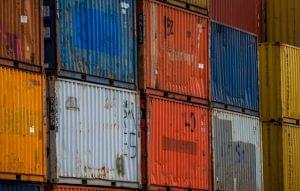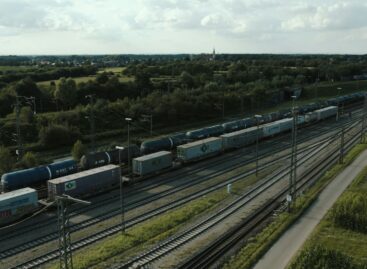Hungarian maritime container traffic has gained new momentum
After the closure of the Suez Canal and the reorganization of global routes caused serious disruptions last year, Hungarian sea container freight consolidated and strengthened in the first quarter of 2025: traffic grew spectacularly by more than 15 percent. The import boom was driven by a wave of factory construction and low sea freight rates, while southern ports regained their leading role. According to the Hungarian Logistics Service Centers Association (MLSZKSZ), this has put the sector back on a stable growth path, although the weakness of exports remains a warning sign.
 Based on the MLSZKSZ’s assessment of the first quarter of 2025, Hungarian sea container intermodal traffic grew by 15.1 percent compared to the same period of the previous year, exceeding expectations. This improvement is a particularly encouraging market correction after a 13 percent decline between 2023 and 2024, resulting in a net growth of 2.1 percent on average over the two years.
Based on the MLSZKSZ’s assessment of the first quarter of 2025, Hungarian sea container intermodal traffic grew by 15.1 percent compared to the same period of the previous year, exceeding expectations. This improvement is a particularly encouraging market correction after a 13 percent decline between 2023 and 2024, resulting in a net growth of 2.1 percent on average over the two years.
The primary drivers of the growth stem from the structural transformation of the Hungarian economy: a significant role was played by the factory construction wave and the recovery in consumer spending, especially for goods from Southeast Asia. Of the nine shipping companies active in the Hungarian market, seven companies saw an increase in traffic, while two experienced a smaller decline – a sign of consolidation in the shipping market.
The role of the southern sea gates is gaining importance
Based on detailed directional traffic analyses, it is clear that southern import traffic continues to dominate: it increased from 51,152 TEU to 62,796 TEU, which represents an increase of more than 20 percent. In contrast, import traffic to the north decreased slightly (from 11,961 TEU to 11,644 TEU). Southern ports thus accounted for 72.1 percent of total maritime traffic, while the northern direction accounted for 27.9 percent.
The moderation in northern traffic can be partly attributed to the stabilization of shipping routes created last year, which were forced to change due to the closure of the Suez Canal, and the re-emergence of Adriatic ports. Northern ports, which had previously enjoyed better accessibility, may have lost some of their competitive advantage.
Related news
The Ministry of Transport invites transport organizations to the negotiating table
🎧 Hallgasd a cikket: Lejátszás Szünet Folytatás Leállítás Nyelv: Auto…
Read more >The government office has begun inspecting parcel delivery services
🎧 Hallgasd a cikket: Lejátszás Szünet Folytatás Leállítás Nyelv: Auto…
Read more >Scientific compass in logistics: Logistics Yearbook 2026 published
🎧 Hallgasd a cikket: Lejátszás Szünet Folytatás Leállítás Nyelv: Auto…
Read more >Related news
Egg prices up nearly one-third
🎧 Hallgasd a cikket: Lejátszás Szünet Folytatás Leállítás Nyelv: Auto…
Read more >Layers of problems
🎧 Hallgasd a cikket: Lejátszás Szünet Folytatás Leállítás Nyelv: Auto…
Read more >Too many gifts, too much food: our holiday excesses are putting a serious strain on the environment
🎧 Hallgasd a cikket: Lejátszás Szünet Folytatás Leállítás Nyelv: Auto…
Read more >






